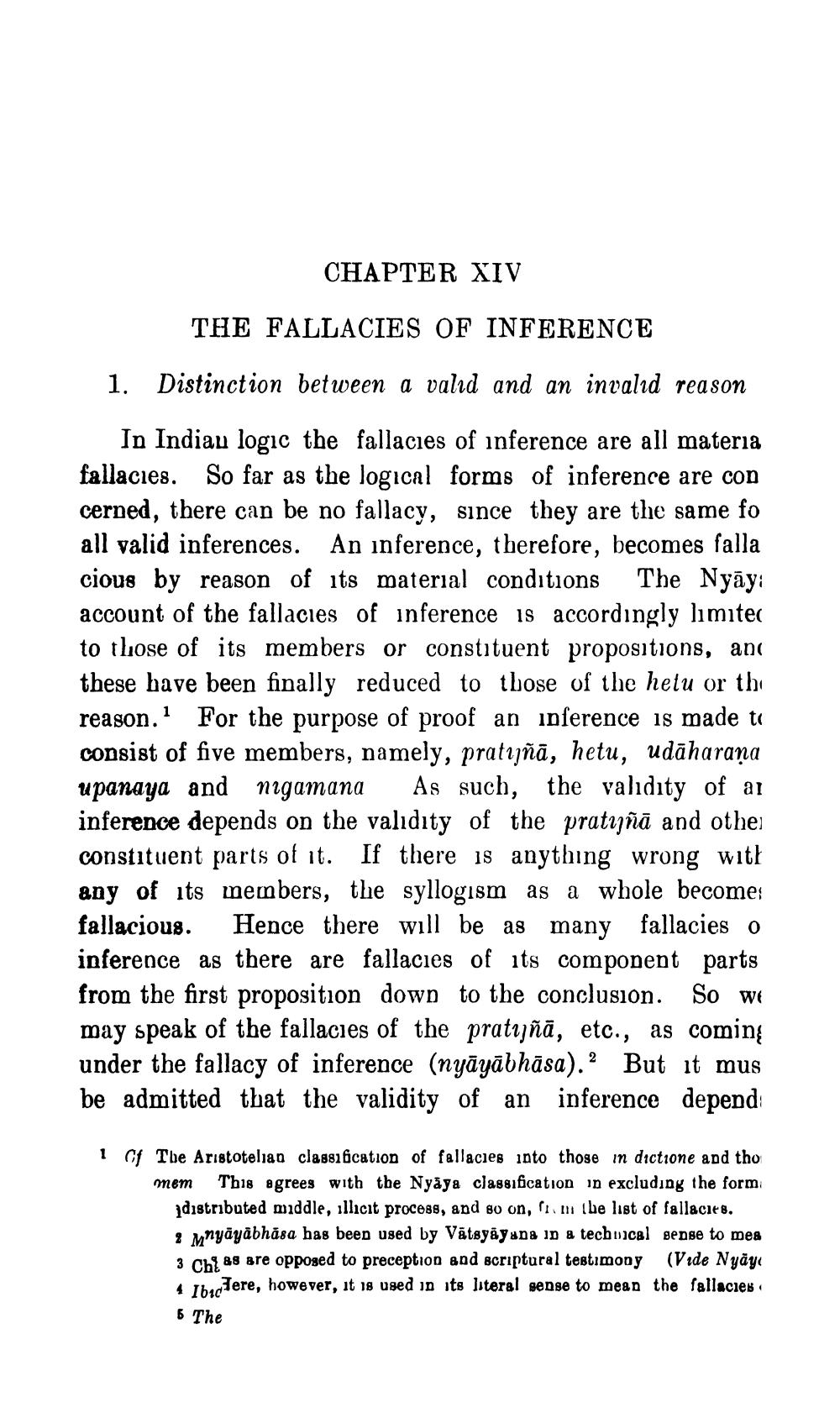________________
CHAPTER XIV
THE FALLACIES OF INFERENCE
1. Distinction between a valid and an invalid reason
In Indiau logic the fallacies of inference are all materia fallacies. So far as the logical forms of inference are con cerned, there can be no fallacy, since they are the same fo all valid inferences. An inference, therefore, becomes falla cious by reason of its material conditions The Nyāy: account of the fallacies of inference is accordingly limited to those of its members or constituent propositions, ani these have been finally reduced to those of the hetu or thi reason." For the purpose of proof an inference is made to consist of five members, namely, pratijñā, hetu, udāharama upanaya and nigamana As such, the valıdıty of an inference depends on the validity of the pratiñā and other constituent parts of it. If there is anything wrong with any of its members, the syllogism as a whole become fallacious. Hence there will be as many fallacies o inference as there are fallacies of its component parts from the first proposition down to the conclusion. So we may speak of the fallacies of the pratijñā, etc., as coming under the fallacy of inference (nyāyābhāsa). But it mus be admitted that the validity of an inference depend
I of The Aristoteliaa classification of fallacies into those in dictione and tho
mem This agrees with the Nyaya classification in excluding the form
distributed middle, illicit process, and so on, on the list of fallacies. a mnyāyābhāsa has been used by Vätsyāyana in a technical sense to mea 3 Ch 88 are opposed to preception and scriptural testimony (Vide Nyaya 4 The Jere, however, it is used in its literal sense to mean the fallacies 6 The




